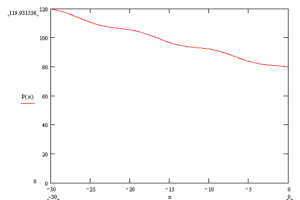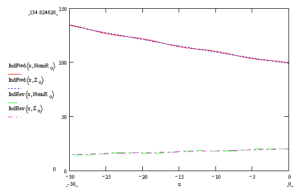A social media posting in a very long thread with a lot of wooly thinking recently contained this explanation:
If you locate your power meter anywhere along the feedline other than at a POWER standing wave null, you will get a reading that is higher than the amount of power being delivered to the load.
A “Power Standing Wave”… hmmm, that is new to me.
The ensuing discussion may discuss this notion, probably in terms of lossless lines.
(Duffy 2008) develops several plots of interesting quantities with a load of 5+j50Ω on a length of RG58A/U using the Telegraphers Equation.
Above is a plot from (Duffy 2008) Above shows P(x) vs displacement x, -ve x is on the source side of the load, at 10MHz with a load of 50+j50Ω where the modelled Zo is 50.4-j0.7Ω. Note that loss under mismatch is not uniform, the slope of P(x) varies with x.
Is this W6YK’s “Power Standing Wave”? There are no nulls, and the minimum is at the load.
A question for the reader, is \(P=P_{fwd}-P_{rev}\) measured at a point x with a directional wattmeter calibrated for 50+j0Ω, or is it simply the power passing that point?
What about the forward and reflected power measures?
Above shows the case at 10MHz with a load of 50+j50Ω where the modelled Zo is 50.4-j0.7Ω. Note the indicated power levels for forward and reflected waves calculated based on a directional wattmeters calibrated to nominal Zo (Ro) and actual Zo.
Conclusions
So I am left wondering what “Power Standing Wave” means.
References:
Duffy, O. 04/2008. VSWR and displacement.

